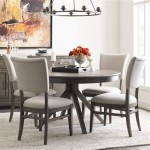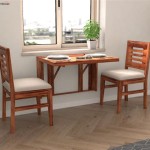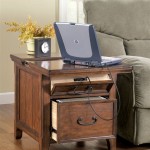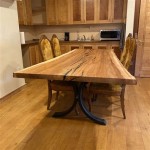Odd Shaped Dining Room Tables
Dining room tables serve as the central hub for family meals, festive gatherings, and everyday activities. While rectangular tables remain a popular choice, odd-shaped dining room tables offer unique advantages in terms of space optimization, aesthetic appeal, and fostering conversation. This article explores the various aspects of odd-shaped dining room tables, including popular shapes, material choices, and design considerations.
Popular Shapes for Odd Shaped Dining Tables
Several distinct shapes deviate from the traditional rectangular form, each offering a unique set of benefits and drawbacks. Understanding these differences can help individuals select the ideal table for their specific needs and dining space. The most common odd shapes include:
*Round: Round tables encourage conversation as everyone faces each other. They are also space-saving, particularly in smaller dining areas, as they lack sharp corners. However, they may not be suitable for large gatherings due to limited seating capacity.
*Oval: Oval tables combine the conversational benefits of round tables with the elongated shape of rectangular tables, offering a balance between intimacy and seating capacity. They work well in both small and larger dining rooms.
*Square: While still technically possessing four sides, square tables differ from rectangles in their equal side lengths. This creates a more intimate dining experience, especially for smaller groups. They can also be effective space-savers in square-shaped rooms.
*Freeform or Live Edge: Freeform tables feature organic, irregular shapes often following the natural contours of the wood. Live edge tables, a subset of freeform, retain the natural edge of the tree, adding a rustic and unique touch to the dining space. These tables create a striking focal point but can be challenging to pair with traditional dining chairs.
Material Choices for Odd Shaped Dining Tables
The material of a dining table significantly impacts its durability, aesthetic, and maintenance requirements. Odd-shaped tables are available in a variety of materials, each with its own characteristics:
*Wood: Wood remains a classic choice for dining tables, offering warmth, durability, and a timeless appeal. Various wood species, including oak, maple, and cherry, offer different grain patterns and colors to suit individual preferences.
*Glass: Glass tabletops create a sense of spaciousness and modernity. They work particularly well in smaller dining areas as they visually lighten the space. Tempered glass is typically used for durability.
*Metal: Metal tables, often featuring steel or aluminum bases, provide a sleek and industrial aesthetic. They are highly durable and require minimal maintenance.
*Stone: Stone tabletops, such as marble or granite, offer a luxurious and sophisticated look. They are highly durable but require careful maintenance to prevent staining and scratching.
*Mixed Materials: Combining materials, like a wood top with metal legs or a glass top with a stone base, allows for greater design flexibility and creates visually interesting contrasts.
Design Considerations for Odd Shaped Dining Tables
Several design elements contribute to the overall functionality and aesthetic of odd-shaped dining tables. Careful consideration of these factors ensures the table complements the dining space and meets the needs of the user.
*Size and Scale: Accurately measuring the dining space and considering the number of people who will regularly use the table is crucial for selecting the appropriate size. Oversized tables can overwhelm a small room, while undersized tables may not adequately accommodate larger gatherings.
*Base Design: The base of the table plays a significant role in both stability and aesthetics. Pedestal bases offer more legroom, while trestle or four-legged bases provide a more traditional look.
*Chair Selection Choosing the right chairs is essential for both comfort and visual harmony. The shape and style of the chairs should complement the table. Round tables often pair well with armless chairs, while oval or freeform tables can accommodate a mix of chair styles.
*Room Layout The placement of the table within the room impacts traffic flow and overall functionality. Consider leaving sufficient space around the table for easy movement and access to other furniture pieces.
*Lighting Proper lighting enhances the dining experience and highlights the table as a focal point. Consider a chandelier or pendant light centered above the table for optimal illumination.
*Decorative Accents Tablecloths, placemats, centerpieces, and other decorative elements can personalize the dining space and complement the style of the table.
*Budget: Odd-shaped dining tables are available at a wide range of price points. Establishing a budget beforehand helps narrow down the available options and ensures a financially sound purchase.
By considering these factors—shape, material, and design—individuals can select an odd-shaped dining table that perfectly complements their lifestyle, dining space, and aesthetic preferences, creating a welcoming and functional hub for meals and gatherings.

Silent Wind Black Walnut Dining Table Alien Irregular Household Solid Dill And Johan

A Hipster Loft
Unusual Dining Tables Mom Foodie

Dining Room Trends 2025 17 Elements For A Modern Space

Types Of Table Tops A Buyer S Guide Grain Frame

Beautiful Leaf Shaped Table

Top 20 Modern Dining Tables

Dining Tables Organic

Luxury Metal Leg Dining Table Unique Shape Designs Rectangular Marble Top And Chair Sets

These Wooden Tree Shaped Dining Tables Are Rooted In Exquisite Design








